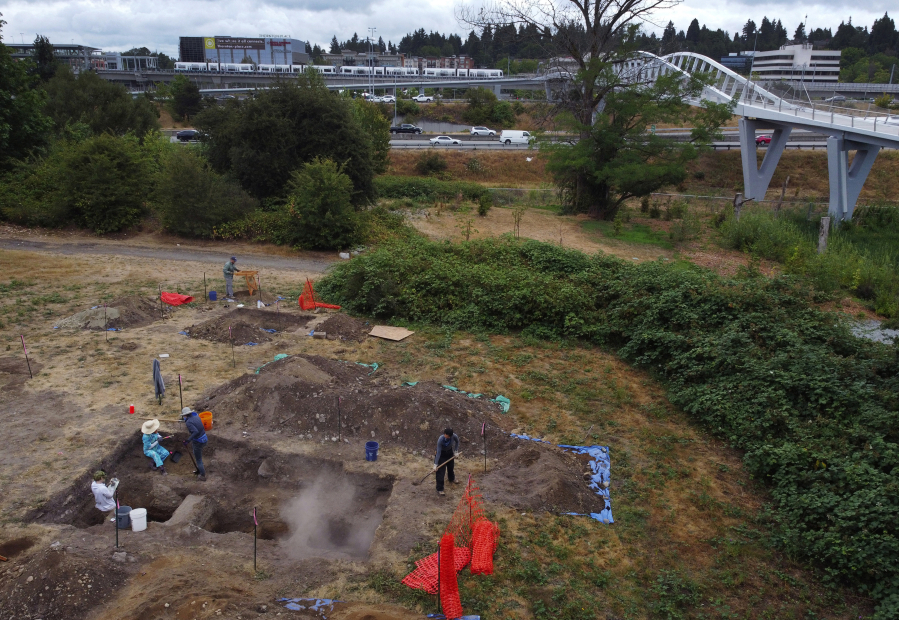SEATTLE — As the sweltering sun beamed down on a team of archaeology students near North Seattle College in late July, they hopped in and out of a hole nearly 5 feet deep to unearth marbles, rusted nails and broken pieces of terra cotta pots.
“It’s no fun digging a hole, but it’s fun seeing what you can uncover in the pit itself,” said student Harley Davidson, 25, of Wedgwood. “You can really build a story and feel the connection to the people that used to live here through what they left behind.”
Davidson was standing at the former site of Green Lake Gardens Co., a flower and vegetable farm run by Shoji Kumasaka and his family from 1919 to 1968. The lush 5-acre lot near North Seattle College was once home to rows of sun-drenched greenhouses filled with Easter lilies, petunias and chrysanthemums. The area was also home to the lively Green Lake Community Center, which served as a space for social connection until Executive Order 9066 was signed in 1942 authorizing the creation of military zones to incarcerate Japanese Americans during World War II. The Kumasaka family was among the estimated 120,000 Japanese Americans who were removed from their homes.
Now, researchers hope to bring renewed attention to the Kumasaka family’s once-thriving hub for Japanese culture and community in the city’s North End. For nearly 50 years, Green Lake Gardens Co. was a place where Japanese Americans in North Seattle cultivated a tight-knit social community even when far from Japantown, or Nihonmachi — the epicenter of Japanese life in Seattle’s Chinatown International District.



